BloostonLaw Telecom Update Published by the Law Offices of Blooston, Mordkofsky, Dickens, Duffy & Prendergast, LLP [Portions reproduced here with the firm's permission.] www.bloostonlaw.com |
| Vol. 13, No. 50 | December 22, 2010 |
 “Bill Shock” Comment Deadline Extended Until January 10 The FCC has extended the comment cycle for its “Bill Shock” Notice of Proposed Rulemaking (NPRM), which proposes to require mobile service providers to provide usage alerts and other information to assist consumers in avoiding unexpected charges on their bills. Comments in this CG Docket Nos. 10-207 and 09-158 proceeding are now due January 10, and replies are due February 8. (BloostonLaw Telecom Update, December 15.) We continue to seek input from clients on whether these proposed requirements will unnecessary costs and hassles on small and rural carriers. Specifically, the FCC is proposing that mobile service providers send notices to customers when they reach a certain percentage of allotted text, voice, or data usage (e.g., 80%). The FCC proposes a second notice when the customer reaches 100% of their monthly allotment. Finally, mobile providers would be required to send notices when customers would be about to incur international or other roaming charges. The FCC is also considering the “content” of such notices, time lines, and other compliance rules. As we have noted previously, BloostonLaw is preparing comments on these issues and invites clients to contact the firm with information on whether measures such as the FCC’s proposed measures would be overly burdensome to implement for small and rural carriers. BloostonLaw contacts: Ben Dickens, Gerry Duffy, and Mary Sisak. |
  SEASON’S GREETINGS SEASON’S GREETINGS
In lieu of holiday cards this season, BloostonLaw will be making a donation to Healthcare for the Homeless, a local charity program. We wish our clients a happy and safe holiday season! In observance of the holiday, we will not publish the newsletter until Jan. 5. Our office will be closed Dec. 23-24 and Dec. 27, and Dec. 31.

INSIDE THIS ISSUE - FCC adopts Net Neutrality Rules.
- FCC to Update 911 system
- Blooston Rural Carriers Oppose Reverse Auctions for Mobility Fund
- 6th Circuit says warrants needed to get stored e-mails
|
FCC Adopts Net Neutrality Rules At Open Meeting At its December 21 open meeting, the FCC adopted an Order “to preserve the Internet as an open network enabling consumer choice, freedom of expression, user control, competition and the freedom to innovate.” Chairman Julius Genachowski voted for the Order; Commissioner Michael Copps concurred and Commissioner Mignon Clyburn approved in part and concurred in part. Commissioners Robert McDowell and Meredith Baker dissented. The Order seeks to set the FCC’s net neutrality initiative back on course following its reversal by the courts earlier this year. The FCC said the network neutrality rules ensure that Internet openness will continue, providing greater certainty to consumers, innovators, investors, and broadband providers, including the flexibility providers need to effectively manage their networks. These rules were developed following a public rulemaking process that began in fall 2009 and included input from more than 100,000 individuals and organizations and several public workshops. The rules require all broadband providers to publicly disclose network management practices, restrict broadband providers from blocking Internet content and applications, and bar fixed broadband providers from engaging in unreasonable discrimination in transmitting lawful network traffic. The FCC said the rules ensure much-needed transparency and continued Internet openness, while making clear that broadband providers can effectively manage their networks and respond to market demands The provisions of the Communications Act the FCC relies on in enacting the open Internet rules include: Section 706 of the Telecommunications Act of 1996: This provision directs the FCC to “encourage the deployment on a reasonable and timely basis” of “advanced telecommunications capability” to all Americans It directs the Commission to undertake annual inquiries concerning the availability of advanced telecommunications capability to all Americans and requires that, if the Commission finds that such capability is not being deployed in a reasonable and timely fashion, it “shall take immediate action to accelerate deployment of such capability by removing barriers to infrastructure investment and by promoting competition in the telecommunications market,” under Section 706(b). In July 2010, the Commission concluded that broadband deployment to all Americans is not reasonable and timely and noted that as a consequence of that conclusion, Section 706(b) was triggered. Section 706(b) therefore provides express authority for the pro-investment, pro-competition rules adopted today. Title II of the Communications Act protects competition and consumers of telecommunications services. Over-the-top Internet voice services — VoIP — can develop as a competitor to traditional phone services. The FCC likewise safeguards interconnection between telephone customers and VoIP users. Title III of the Act gives the Commission authority to license spectrum used to provide fixed and mobile wireless services. Licenses must be subject to terms that serve the public interest. The Commission previously has required certain wireless licensees to comply with open Internet principles, as appropriate in the particular situation before it. The FCC states that the open Internet conditions adopted today likewise are necessary to advance the public interest in innovation and investment. Title VI of the Communications Act protects competition in video services. Internet video distribution is increasingly important to video competition. A cable or telephone company’s interference with the online transmission of programming by Direct Broadcast Satellite operators or stand-alone online video programming aggregators that may function as competitive alternatives to traditional Multichannel Video Programming Distributors would frustrate Congress’s stated goals in enacting Section 628 of the Act, which include promoting “competition and diversity in the multichannel video programming market.” Following are key excerpts from the Report and Order adopted by the Commission to preserve the open Internet: Rule 1: Transparency A person engaged in the provision of broadband Internet access service shall publicly disclose accurate information regarding the network management practices, performance, and commercial terms of its broadband Internet access services sufficient for consumers to make informed choices regarding use of such services and for content, application, service, and device providers to develop, market, and maintain Internet offerings. Rule 2: No Blocking A person engaged in the provision of fixed broadband Internet access service, insofar as such person is so engaged, shall not block lawful content, applications, services, or non-harmful devices, subject to reasonable network management. A person engaged in the provision of mobile broadband Internet access service, insofar as such person is so engaged, shall not block consumers from accessing lawful websites, subject to reasonable network management; nor shall such person block applications that compete with the provider’s voice or video telephony services, subject to reasonable network. Rule 3: No Unreasonable Discrimination A person engaged in the provision of fixed broadband Internet access service, insofar as such person is so engaged, shall not unreasonably discriminate in transmitting lawful network traffic over a consumer’s broadband Internet access service. Reasonable network management shall not constitute unreasonable discrimination. Select Definitions Broadband Internet access service: A mass-market retail service by wire or radio that provides the capability to transmit data to and receive data from all or substantially all Internet endpoints, including any capabilities that are incidental to and enable the operation of the communications service, but excluding dial-up Internet access service. This term also encompasses any service that the Commission finds to be providing a functional equivalent of the service described in the previous sentence, or that is used to evade the protections set forth in this Part. Reasonable network management. A network management practice is reasonable if it is appropriate and tailored to achieving a legitimate network management purpose, taking into account the particular network architecture and technology of the broadband Internet access service. Legitimate network management purposes include: ensuring network security and integrity, including by addressing traffic that is harmful to the network; addressing traffic that is unwanted by users (including by premise operators), such as by providing services or capabilities consistent with a user’s choices regarding parental controls or security capabilities; and by reducing or mitigating the effects of congestion on the network. Pay for Priority Unlikely to Satisfy “No Unreasonable Discrimination” Rule The FCC’s Order indicates that a commercial arrangement between a broadband provider and a third party to directly or indirectly favor some traffic over other traffic in the connection to a subscriber of the broadband provider (i.e., “pay for priority”) would raise significant cause for concern: First, pay for priority would represent a significant departure from historical and current practice. Since the beginning of the Internet, Internet access providers have typically not charged particular content or application providers fees to reach the providers’ consumer retail service subscribers or struck pay-for-priority deals, and the record does not contain evidence that U.S. broadband providers currently engage in such arrangements. Second, this departure from longstanding norms could cause great harm to innovation and investment in and on the Internet. As discussed above, pay-for-priority arrangements could raise barriers to entry on the Internet by requiring fees from edge providers, as well as transaction costs arising from the need to reach agreements with one or more broadband providers to access a critical mass of potential users. Fees imposed on edge providers may be excessive because few edge providers have the ability to bargain for lesser fees, and because no broadband provider internalizes the full costs of reduced innovation and the exit of edge providers from the market. Third, pay-for-priority arrangements may particularly harm non-commercial end users, including individual bloggers, libraries, schools, advocacy organizations, and other speakers, especially those who communicate through video or other content sensitive to network congestion. Even open Internet skeptics acknowledge that pay for priority may disadvantage non-commercial uses of the network, which are typically less able to pay for priority, and for which the Internet is a uniquely important platform. Fourth, broadband providers that sought to offer pay-for-priority services would have an incentive to limit the quality of service provided to non-prioritized traffic. In light of each of these concerns, as a general matter, it is unlikely that pay for priority would satisfy the “no unreasonable discrimination” standard. The practice of a broadband Internet access service provider prioritizing its own content, applications, or services, or those of its affiliates, would raise the same significant concerns and would be subject to the same standards and considerations in evaluating reasonableness as third-party pay-for-priority arrangements. Measured Steps for Mobile Broadband The FCC’s Order also indicates that mobile broadband presents special considerations that suggest differences in how and when open Internet protections should apply. Mobile broadband is an earlier-stage platform than fixed broadband, and it is rapidly evolving. For most of the history of the Internet, access has been predominantly through fixed platforms— first dial-up, then cable modem and DSL services. As of a few years ago, most consumers used their mobile phones primarily to make phone calls and send text messages, and most mobile providers offered Internet access only via “walled gardens” or stripped down websites. Today, however, mobile broadband is an important Internet access platform that is helping drive broadband adoption, and data usage is growing rapidly. The mobile ecosystem is experiencing very rapid innovation and change, including an expanding array of smartphones, aircard modems, and other devices that allow mobile broadband providers to enable Internet access; the emergence and rapid growth of dedicated-purpose mobile devices like e-readers; the development of mobile application (“app”) stores and hundreds of thousands of mobile apps; and the evolution of new business models for mobile broadband providers, including usage-based pricing. Moreover, most consumers have more choices for mobile broadband than for fixed broadband. Mobile broadband speeds, capacity, and penetration are typically much lower than for fixed broadband, though some providers have begun offering 4G service that will enable offerings with higher speeds and capacity and lower latency than previous generations of mobile service. In addition, existing mobile networks present operational constraints that fixed broadband networks do not typically encounter. This puts greater pressure on the concept of “reasonable network management” for mobile providers, and creates additional challenges in applying a broader set of rules to mobile at this time. Further, the FCC recognizes that there have been meaningful recent moves toward openness, including the introduction of open operating systems like Android. In addition, the FCC anticipates soon seeing the effects on the market of the openness conditions it imposed on mobile providers that operate on upper 700 MHz C-Block spectrum, which includes Verizon Wireless, one of the largest mobile wireless carriers in the U.S. In light of these considerations, the FCC concluded it is appropriate to take measured steps at this time to protect the openness of the Internet when accessed through mobile broadband. Specialized Services In the Open Internet NPRM, the Commission recognized that broadband providers offer services that share capacity with broadband Internet access service over providers’ last-mile facilities, and may develop and offer other such services in the future. These “specialized services,” such as some broadband providers’ existing facilities-based VoIP and Internet Protocol-video offerings, differ from broadband Internet access service and may drive additional private investment in broadband networks and provide consumers valued services, supplementing the benefits of the open Internet. At the same time, specialized services may raise concerns regarding bypassing open Internet protections, supplanting the open Internet, and enabling anticompetitive conduct. The FCC noted also that its rules define broadband Internet access service to encompass “any service that the Commission finds to be providing a functional equivalent of [broadband Internet access service], or that is used to evade the protections set forth in these rules.” The FCC will closely monitor the robustness and affordability of broadband Internet access services, with a particular focus on any signs that specialized services are in any way retarding the growth of or constricting capacity available for broadband Internet access service. The FCC fully expects that broadband providers will increase capacity offered for broadband Internet access service if they expand network capacity to accommodate specialized services. The FCC would be concerned if capacity for broadband Internet access service did not keep pace. The FCC also expects broadband providers to disclose information about specialized services’ impact, if any, on last-mile capacity available for, and the performance of, broadband Internet access service. The FCC may consider additional disclosure requirements in this area in its related proceeding regarding consumer transparency and disclosure. The FCC would also be concerned by any marketing, advertising, or other messaging by broadband providers suggesting that one or more specialized services, taken alone or together, and not provided in accordance with its open Internet rules, is “Internet” service or a substitute for broadband Internet access service. Finally, the FCC will monitor the potential for anticompetitive or otherwise harmful effects from specialized services, including from any arrangements a broadband provider may seek to enter into with third parties to offer such services. The Open Internet Advisory Committee will aid the FCC in monitoring these issues. Most observers agree that the rules are certain to face a court challenge and have already prompted opposition from Republican lawmakers, who plan to take Congressional action. Rep. Marsha Blackburn (R-Tenn.) said she will reintroduce legislation to repeal the rules. Sen. Kay Bailey Hutchison (R-Tex.) said she will move to withdraw funds appropriated to the FCC to execute the rules. "The FCC is attempting to push excessive government regulation of the Internet through without Congressional authority, and these actions threaten the very future of the technology," said Hutchison, the ranking GOP member of the Energy and Commerce Committee. Consumer groups are not happy either, and say they will consider filing suit because the rules don’t go far enough. BloostonLaw contacts: Hal Mordkofsky, Ben Dickens, Gerry Duffy, and John Prendergast. FCC Moves To Revolutionize Nationwide 9-1-1 System The FCC, at its December 21 open meeting, adopted a Notice of Inquiry (NOI) seeking public comment on how Next Generation 911 (NG911) can enable the public to obtain emergency assistance by means of advanced communications technologies beyond traditional voice-centric devices. The FCC said it has undertaken this proceeding in response to a recommendation in the National Broadband Plan seeking to harness the life-saving potential of text messaging, email, video and photos from mobile and landline broadband services. Despite the fact that there are more than 270 million wireless consumers nationwide and that approximately 70 percent of all 9-1-1 calls are made from mobile hand-held devices, today’s 9-1-1 systems support voice-centric communications only and are not designed to transfer and receive text messaging, videos or photos, the FCC said. In some emergency situations — especially in circumstances where a call could further jeopardize someone’s life and safety — texting may be the only way to reach out for help. In addition, many Americans, particularly those with disabilities, rely on text messaging as their primary means of communication. FCC Chairman Julius Genachowski pointed out that during the Virginia Tech shootings, some students thought they were texting to 9-1-1 call centers, but their texts could not be received. The sharing of timely and relevant videos and photos would provide first responders with on-the-ground information to help assess and address emergencies in real-time. For example, these technologies could help report crimes as they are happening thus giving law enforcement officials an increased advantage when responding, the FCC said. The NOI asks a comprehensive set of questions that address a number of issues related to the deployment of Next Generation 9-1-1 services, including, but not limited to: - The technical feasibility and limitations of text messaging video streaming and photos;
- Consumer privacy issues, particularly related to the sharing of personal electronic medical data;
- Development of technical and policy standards;
- Consumer education and awareness; and
- Inter-governmental coordination and coordination within the public safety community.
At our deadline, the text of the NOI was not available. BloostonLaw contacts: Hal Mordkofsky, John Prendergast, and Richard Rubino. Blooston Rural Carriers Oppose Reverse Auction Plan In Mobility Fund NPRM BloostonLaw, on behalf of its rural telecom clients, the “Blooston Rural Carriers,” filed comments opposing the FCC’s “reverse auction” proposal in the Mobility Fund Notice of Proposed Rulemaking (NPRM) proceeding last week. The Blooston Rural Carriers said they do not share the FCC's optimism regarding the benefits and impacts, particularly those in the long run, of largely untested reverse auctions. Even in pure "green field" situations, reverse auctions are susceptible to construction and equipment quality shortcuts and other gaming strategies that can result in deceptively low "'winning bids." Lowball bids are likely to require larger disbursements of high-cost support in the long term to replace inferior facilities at early dates or otherwise to revise significantly the service and/or business proposals of winning bidders, the Carriers said. In non-green field situations, there are a host of additional issues that have never been satisfactorily addressed or resolved, including (but not limited to) equitable comparison and evaluation of the differing cost and service characteristics of different technologies, stranding of investment required under previous regulatory regimes, rights of creditors and repayments of outstanding loans, and the treatment of carrier of last resort obligations and costs, the Carriers added. Even if the Commission determines to ignore these general concerns and to experiment with a reverse auction for the proposed Mobility Fund, the Blooston Rural Carriers have three specific concerns with the proposed design of the Mobility Fund reverse auction. First, because of substantial existing and potential funding demands upon Universal Service Fund (USF) programs, the Commission should expressly restrict participation in the Mobility Fund reverse auction to bidders whose proposed third generation (3G) mobile wireless broadband networks and facilities are capable of ready, efficient and economical conversion to fourth generation (4G) mobile wireless broadband networks. Second, the Mobility Fund reverse auction procedures must give service providers of all sizes, including rural telephone companies and other small businesses, a fair and equitable opportunity to receive support—and not employ the proposed "lowest per-unit bids across all areas" procedure that unduly and inequitably favors large carriers. Third, successful bidders in Mobility Fund reverse auctions should be required to certify that they will not participate in exclusive arrangements for the design and procurement of handsets and other equipment. At a time when there are substantial competing needs for USF funding, it would be unreasonably inefficient and wasteful for the proposed Mobility Fund to support capital expenditures for non-convertible 3G facilities and equipment when superseding 4G service rollouts are already being advertised in urban areas, the Blooston Rural Carriers said. Scarce USF funds should not be used to deploy non-convertible 3G facilities that are likely to become outmoded and to need to be replaced by 4G networks within the immediately foreseeable future. It will be far more efficient and less expensive in the longer run to require the Mobility Fund to support only 30 facilities and equipment that can be readily and economically converted to 4G services, or to postpone its operations for a year or two until 4G facilities and equipment become readily available, the Blooston Rural Carriers said. As 4G networks are deployed, non-convertible 3G equipment is likely to decline rapidly in value and price vis-a-vis both convertible 3G equipment and new 4G equipment, the Carriers said. They added that this phenomenon, plus the "race to the bottom” vagaries of reverse auctions, could result in substantial misdirection and waste of Mobility Fund dollars. Specifically, if use of the cheaper non-convertible 3G equipment provides bidders with significant "per-unit" cost advantages over potential competitors proposing to employ convertible 3G equipment, the reverse auction process could result in the deployment of substantial non-convertible 3G facilities that will provide the affected rural areas with increasingly sub-par 3G mobile broadband service until they can be scrapped and replaced with 4G facilities at a much higher overall cost than would have incurred if convertible 3G facilities had been installed initially, the Carriers said. The Blooston Rural Carriers also argued that the Mobility Fund must be distributed in an equitable manner that includes small entities; and that exclusive equipment design and procurement arrangements should be prohibited. BloostonLaw contacts: Ben Dickens, Gerry Duffy, and Mary Sisak. Rep. Greg Walden (R-Ore.) has been named Chairman of the Subcommittee on Communications and Technology of the House Energy and Commerce Committee. APCC SEEKS LIFELINE SUPPORT RELIEF FOR PAYPHONE PROVIDERS: The FCC has asked for comment on a petition for interim relief and a petition for rulemaking filed on December 6, 2010, by the American Public Communications Council (APCC). Specifically, the APCC petition for interim relief seeks “immediate” action by the Commission to allow eligible telecommunications carriers (ETCs) to receive Lifeline support from the Universal Service Fund (USF) for the payphone line service they currently provide. APCC proposes that payphone line service be eligible for Lifeline support at $10 per month per line for all publicly available phones. Further, the APCC petition for rulemaking requests the Commission to create a new Lifeline Tier 5 “Payphone Service” level and to amend sections 54.400, 54.403, 54.407, and 54.410 of the Commission’s rules to make payphone lines permanently eligible for Lifeline support. Comments in this CC Docket No. 96-45 and WC Docket No. 03-109 proceeding are due January 18, and replies are due February 2. BloostonLaw contacts: Ben Dickens, Gerry Duffy, and Mary Sisak. COURT SAYS GOVERNMENT MUST HAVE WARRANT TO GET STORED E-MAILS: The 6th U.S. Circuit Court of Appeals in Cincinnati has ruled that the government must obtain a court warrant to require internet service providers to turn over stored e-mail to the authorities. The decision, in United States v. Warshak, was the first time an appellate court said Americans had that Fourth Amendment protection. The case stems from Steven Warshak, founder of an Ohio herbal-supplement company that marketed male-enhancement tablets. As part of a fraud investigation, the government obtained thousands of his e-mails from his ISP without a warrant. He appealed his 25-year conviction on those and other grounds, and the circuit court threw out his sentence on issues unrelated to the court’s language concerning e-mail privacy. Regarding e-mail privacy, the Stored Communications Act of 1986 allows the government to obtain a suspect’s e-mail from an ISP without a probable cause warrant, after it has been stored for 180 days or more. But the 6th Circuit said this part of the Act was unconstitutional. “The Fourth Amendment must keep pace with the inexorable march of technological progress, or its guarantees will wither and perish,” the court ruled. The Stored Communications Act was enacted at a time when e-mail generally wasn't stored on servers for a long time, but instead held there briefly on their way to the recipient’s inbox. So any e-mail over 6 months old could be safely assumed to have been abandoned. In today’s reality, e-mail can, and is, being stored on servers forever. A consortium of businesses, including Google and Microsoft, recently asked Congress to update the law and require probable cause to obtain any e-mail, regardless of its age. Specifically, the court said: “Warshak enjoyed a reasonable expectation of privacy in his emails vis-a-vis NuVox, his Internet Service Provider. Thus, government agents violated his Fourth Amendment rights by compelling NuVox to turn over the emails without first obtaining a warrant based on probable cause. However, because the agents relied in good faith on provisions of the Stored Communications Act, the exclusionary rule does not apply in this instance.” However, going forward, the enhanced protections for stored e-mails will apply. BloostonLaw contacts: Ben Dickens, Gerry Duffy, and Mary Sisak. CONGRESS PASSES LOCAL COMMUNITY RADIO ACT: The Local Community Radio Act (HR 6533) was passed on Saturday, Dec. 18 by both the House and Senate, and is a reaction to an FCC report that ownership of FM stations has become too consolidated, thereby depriving smaller communities of a local voice. The act is designed to clear the way for the licensing of hundreds of additional Low Power FM (LPFM) stations, for use in less populated areas where they will not cause interference to existing high power stations. The President is expected to sign the Act into law, since it represents a bipartisan compromise. Congress and the FCC had already authorized the licensing of LPFM stations, and 500 have been licensed, but in 2000 Congress had the FCC impose a freeze on further licensing while interference concerns were being studied. The Local Community Radio Act recognizes that the Congressionally mandated study shows that the interference concerns were unsubstantiated, and opens the door to new LPFM licensing. The Act states that these new LPFM stations must be FCC-approved "based on the needs of the local community," and that restrictions are in place to "prohibit any applicant from obtaining a low-power FM license if the applicant has engaged in any manner in the unlicensed operation of any station in violation of section 301 of the Communications Act of 1934 [i.e., existing pirate radio operators cannot now be licensed]." There is also built-in protection for "full-power FM stations that are licensed in significantly populated States with more than 3,000,000 housing units and a population density greater than 1,000 per square mile," so low-power stations may be more difficult to acquire in those areas. More than 500 LPFM stations have been given the green-light since 2001. According to the bill, "These stations are currently on the air and are run by local government agencies, groups promoting arts and education to immigrant and indigenous peoples, artists, schools, religious organizations, environmental groups, organizations promoting literacy, and many other civically oriented organizations." With the passing of this bill, many more of these LPFM stations are likely to be licensed. Like the FM translator stations that currently rebroadcast large market FM signals to remote areas, it is expected that the LPFM stations will operate within the FCC's 250 watt effective radiated power limit. The Act calls for the FCC to conduct an economic study and adopt certain rule changes (such as the prohibition on licensing former pirate radio operators), and there is an open docket (MM Docket No. 99-25) dealing with these issues. Therefore, we should see some sort of Further Notice of Proposed Rulemaking out of the FCC, to be followed by a Report and Order, before licensing of additional LPFM stations commences. The compromise represented in the Act allows new LPFM stations on the third-adjacent FM channel in a given market, but not the second-adjacent channel. In general, the FCC shall not amend its rules to reduce the minimum co-channel and first- and second-adjacent channel distance separation requirements in effect on the date of enactment of this Act between low-power FM stations; and full-service FM stations. The FCC may grant a waiver of the second-adjacent channel distance separation requirement to low-power FM stations that establish, using methods of predicting interference taking into account all relevant factors, including terrain-sensitive propagation models, that their proposed operations will not result in interference to any authorized radio service. The FCC shall comply with its existing minimum distance separation requirements for full-service FM stations, FM translator stations, and FM booster stations that broadcast radio reading services via an analog subcarrier frequency to avoid potential interference by low-power FM stations. BloostonLaw contacts: Hal Mordkofsky, John Prendergast, and Richard Rubino. AT&T TO ACQUIRE QUALCOMM 700 MHz SPECTRUM: AT&T and Qualcomm have announced today that AT&T has agreed to purchase spectrum licenses in the Lower 700 MHz frequency band from Qualcomm for $1.925 billion. The move is expected to bolster AT&T’s ability to provide an advanced 4G mobile broadband experience for its customers in the years ahead. Qualcomm currently uses the licenses to support the service business of FLO TV Incorporated, a wholly owned subsidiary of Qualcomm, and the sale follows Qualcomm’s previously announced plan to evaluate strategic options for the FLO TV business. Qualcomm expects that the FLO TV business and network will be shut down in March 2011. The spectrum covers more than 300 million people total nationwide: 12 MHz of Lower 700 MHz D and E block spectrum covers more than 70 million people in five of the top 15 U.S. metropolitan areas — New York, Boston, Philadelphia, Los Angeles and San Francisco; 6 MHz of Lower 700 MHz D block spectrum covers more than 230 million people across the rest of the U.S. As part of its longer-term 4G network plans, AT&T intends to deploy this spectrum as supplemental downlink, using carrier aggregation technology. This technology is designed to deliver substantial capacity gains and is expected to be enabled with the completion of 3GPP Release 10. AT&T expects to begin deploying this spectrum once compatible handsets and network equipment are developed. Qualcomm said it intends to integrate carrier aggregation technology into its chipset roadmap, to enable supplemental downlink to address increased consumer demand for rich mobile media content. AT&T expects to deploy this technology, demonstrating its commitment to deliver a great mobile broadband experience — now and in the future. The transaction is subject to regulatory approvals and other customary closing conditions, and AT&T and Qualcomm anticipate closing the sale during the second half of calendar year 2011.  BloostonLaw
Private Users Update Published by the Law Offices of Blooston, Mordkofsky, Dickens, Duffy & Prendergast, LLP [Portions reproduced here with the firm's permission.] www.bloostonlaw.com |
| Vol. 11, No. 11 | November 2010 |
Reminder of Narrowband Migration Deadlines For 150-174 MHz and 421 MHz Bands The FCC has issued a Public Notice to remind private radio licensees of the deadlines for private land mobile radio services in the 150-174 MHz and 421-512 MHz bands to migrate to narrowband (12.5 kHz or narrower) technology. Licensees and frequency coordinators should be aware of the following deadlines: (1) Beginning January 1, 2011, the Commission will no longer accept applications for: - New wideband 25 kHz (i.e., operating with only one voice path per 25 kHz of spectrum) operations, and
- Modification of existing wideband 25 kHz stations that expand the authorized interference contour (19 dBu VHF, 21 dBu UHF); and
(2) By January 1, 2013, Industrial/Business and Public Safety Radio Pool licensees must: - Operate on 12.5 kHz (11.25 kHz occupied bandwidth) or narrower channels, or
- Employ a technology that achieves the narrowband equivalent of one channel per 12.5 kHz of channel bandwidth for voice and transmission rates of at least 4800 bits per second per 6.25 kHz for data systems operating with bandwidths greater than 12.5 kHz.
Equipment manufacturers should be aware that, beginning January 1, 2011, the Commission will no longer certify 150-174 MHz or 421-512 MHz band equipment capable of operating with only one voice path per 25 kHz of spectrum. Providers may manufacture and import previously-certified equipment with a 25 kHz mode until January 1, 2013. BloostonLaw is preparing the necessary narrowbanding applications for our retainer clients. If a retainer client has not received a narrowbanding application covering each of their call signs by June 1, 2012 they should contact us. If any of your licenses are NOT under retainer with us, or if you would otherwise like assistance with the narrowbanding process, please contact us. BloostonLaw contacts: Hal Mordkofsky, John Prendergast, and Richard Rubino. FCC Pushes Interoperability For Public Safety Broadband The FCC has adopted an Order that establishes a technical framework to ensure interoperability in the public safety mobile broadband networks that states, counties and cities approved for early deployment are planning to construct. These regional broadband networks must be technically compatible and fully interoperable with one another, as well as the nationwide network envisioned for America’s first responders. The FCC requirements for a baseline technical framework address core aspects for interoperable communications, such as roaming capabilities, system identifiers, service coverage and secure communications, to ensure that public safety officials can communicate effectively and seamlessly with one another regardless of what network they are operating on. The Order is based on recommendations made by the FCC’s Emergency Response Interoperability Center (ERIC) to ensure that public safety broadband communications are interoperable nationwide. Under the baseline technical framework, waiver recipients will: - Construct networks that support Long Term Evolution (LTE) interfaces that support roaming and interoperability;
- Construct networks that provide outdoor coverage at minimum data rates of 256 Kbps uplink and 768 Kbps downlink for all types of devices throughout the cell coverage area;
- Provide 95 percent reliability of signal coverage for all services and applications throughout the network;
- Conduct conformance testing on devices to ensure compliance with technical requirements associated with 3GPP Release 8 (LTE) and higher release standards;
- Perform interoperability testing of the LTE interfaces to determine their roaming capabilities and make sure that these capabilities are sufficient;
- Build security and encryption features into their networks based on certain optional features of the 3GPP security features for LTE Network Access Domain;
- Allow to use permanent fixed point-to-point and point-to-multipoint stations only on an ancillary basis and on a non-interference basis to the primary mobile operations; and
- Coordinate with one another when their networks overlap or operate adjacent to one another to avoid signal/spectral interference or disruption to communications.
BloostonLaw contacts: Hal Mordkofsky, John Prendergast, Richard Rubino, and Cary Mitchell. FCC Grants Power Limit Waivers For Telemetry Ops In 450-470 MHz Band The FCC has granted eight requests for temporary waivers of the power limit for telemetry operations in the 450-470 MHz band. Specifically, eight railroads requested waivers to permit the operation of end-of-train (EOT) devices with eight watts transmitter output power, pending the resolution of a related rulemaking proceeding. Section 90.238(e) of the Commission’s Rules limits telemetry operations in the 450-470 MHz band to two watts transmitter output power. EOT devices, which operate on frequency pair 452/457.9375 MHz, transmit information regarding the brake pipe pressure on the rear car to the lead locomotive for display to the locomotive engineer and allow the locomotive engineer to apply the rear train brakes in an emergency. As a practical matter, EOT devices must be mounted on the coupling knuckle behind the last car in the train, but the path from the end of the train to the front of the train is always blocked by intervening train cars, and also can be adversely affected by variable terrain factors. Currently pending before the Commission is a petition for rulemaking requesting that the maximum permissible power for EOT devices be increased, in order to minimize the possibility of communications link failure for EOT devices (especially on longer trains). The Commission proposed to amend Section 90.238(e) to allow EOT devices to operate with up to eight watts transmitter output power, and sought comment on the proposal. The rule-making proceeding remains pending. In August 2010, Norfolk Southern Railway Company and Union Pacific Railroad Company filed applications and requests for temporary waivers of Section 90.238(e) to permit operation of EOT devices with eight watts transmitter output power, pending the resolution of the rule-making proceeding. The Wireless Telecommunications Bureau’s Mobility Division sought comment on the waiver requests, and stated that it expected similar requests from other railroads. BNSF Railway Company, Wisconsin Central System, CSX Transportation Inc., Delaware and Hudson Railway, Kansas City Southern Railway Company, and Soo Systems Radio Communications Corporation subsequently filed similar requests. The Federal Railroad Administration (FRA) and Association of American Railroads (AAR) filed comments in support of the waiver requests. They state that the operating length of trains has increased in recent years, rendering the current power limit insufficient to support reliable communications between the front and end of the train. They also argue that permitting a transmitter output power of up to eight watts will not result in interference to other users, because use of frequency pair 452/457.9375 MHz is coordinated by the railroad industry. The purpose of the two-watt limit on telemetry operations in the 450-470 MHz band is to provide adequate power for telemetry operations, while avoiding interference to other users. The FCC concluded that this purpose would not be served by application to EOT devices. Finally, the FCC noted that EOT devices have been approved by the Commission for a maximum transmitter output power of two watts. Ordinarily, the FCC said, manufacturers would be required to obtain new equipment authorizations consistent with the parameters of the waiver granted herein before any EOT device could be operated with higher power. The FCC concluded, however, that this is not necessary for EOT devices that already are capable of operating in either two-watt mode or eight-watt mode. Therefore, for currently certificated EOT devices that can be modified to operate with eight watts transmitter output power by software upgrade without any hardware change, the FCC waived its equipment authorization rules to permit the modification to be treated as a Class II permissive change. Hal Mordkofsky, John Prendergast, Richard Rubino, and Cary Mitchell. FCC Denies Proposal for Nationwide low power license The FCC has denied a petition for reconsideration of the dismissal of the proposal of Innovation Wireless for a nationwide service area using low power frequencies. Innovation had filed an application for a nationwide license authorizing low power operation on certain 450-470 MHz band frequencies. Section 90.267 of the Commission’s Rules designates certain 450-470 MHz band frequencies for low power operation. The frequencies are divided among six groups, which are subject to different rules regarding, e.g., area of operation, use, and eligibility. On January 8, 2010, Innovation filed an application seeking authority to operate on a nationwide basis on three Group B frequencies. On July 3, 2010, the application was dismissed, and Innovation sought reconsideration. It argued that the application should not have been dismissed for requesting a nationwide service area, because Section 90.267 provides that Group B frequencies “are available nationwide on a coordinated basis.” Innovation also argued that other applications for nationwide use of low power frequencies have been granted. The FCC found that Innovation’s argument that Section 90.267 authorizes the use of Group B frequencies with a nationwide area of operation is incorrect. Section 90.267(h)(1) specifically provides that “wide area operations will not be authorized. The area of normal day-to-day operations will be described in the application in terms of maximum distance from a geographic center (latitude and longitude).” The FCC said that Innovation’s application did not meet this requirement. Section 90.267 provides that some low power frequency groups are available “nationwide” in order to distinguish them from the groups that are subject to different rules in different areas, not to authorize use in a nationwide area of operation. Innovation also argued that “the Bureau has previously granted nationwide authorizations for equally situated applicants. In keeping with the most basic principles of fundamental fairness, the FCC said it is required to give due regard to the rights and privileges of Innovation.” Innovation does not identify any such applicants, so the FCC said it cannot determine whether they are in fact “equally situated.” Moreover, an erroneous grant of a nationwide license to a previous applicant is not grounds for granting Innovation such a license, it said. Group B low power frequencies are available for use only in specified areas of operation, so Innovation’s application for a nationwide license was properly dismissed, the FCC said. Consequently, the FCC denied Innovation’s petition for reconsideration of the dismissal. Hal Mordkofsky, John Prendergast, Richard Rubino, and Cary Mitchell. NC Highway Patrol Granted Waiver For Microwave Link The FCC has conditionally granted the North Carolina State Highway Patrol’s two applications to increase the authorized power of a licensed microwave link that connects the Wake County 911 Dispatch Center to the Downtown Raleigh Land Mobile Radio system for the City of Raleigh and Wake County Public Safety Agencies. NC Highway Patrol seeks a waiver of Section 101.143(b) of the Commission’s rules in order to exceed the maximum equivalent isotropically radiated power (EIRP) specified by this rule for short paths in the 10 GHz frequency band. NC Highway Patrol uses a microwave link to provide dispatch communication from the 911 Center to the LMR Center in order to ensure the safety of its police, fire and EMS first-responders. NC Highway Patrol notes, however, that the redesign of a building in downtown Raleigh could potentially block the existing direct microwave path between the 911 Center and the LMR Center. As a result, NC Highway Patrol states that it has recently been using a “less reliable wired solution as a stop gap measure” to ensure communication from the 911 Center to the LMR Center. NC Highway Patrol applied for and received authorization to modify the path of its microwave link to circumvent the obstruction. Specifically, the new path will employ a passive repeater located on the top of the County Courthouse to re-route the microwave signal around the obstruction. In this instance, the FCC found that the redesign of a building in downtown Raleigh, North Carolina, constitutes a unique or unusual factual circumstance sufficient to warrant waiver relief under the Commission’s rules. Specifically, because of the building’s redesign, NC Highway Patrol avers that it must re-route the microwave signal using a passive repeater. But in order to maintain the desired composite fade margin of 25 dB for its system at the maximum power levels permitted under Section 101.143(b), NC Highway Patrol states that it must increase the EIRP of the system to make up for the additional 10 dB of loss its signal would experience passing through the passive repeater. In this connection, the FCC noted that NC Highway Patrol coordinated its proposed increase in power with existing users without receiving objection from those existing users. Based on these facts, the FCC found it would be inequitable and unduly burdensome for NC Highway Patrol to attempt to attain the desired composite fade margin while complying with the power limits specified in Section 101.143(b) of our rules. Therefore, it granted the waiver request. Hal Mordkofsky, John Prendergast, Richard Rubino, and Cary Mitchell. 
This newsletter is not intended to provide legal advice. Those interested in more information should contact the firm. |








.JPG)
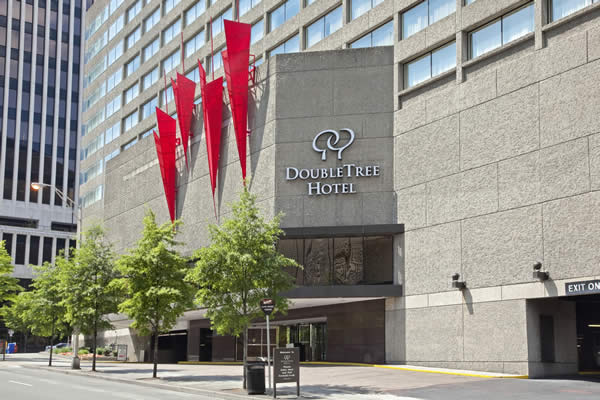








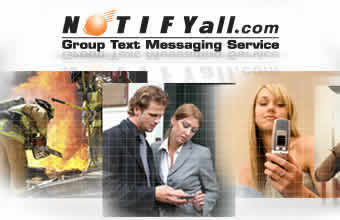
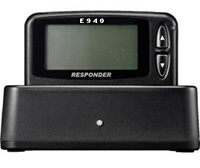




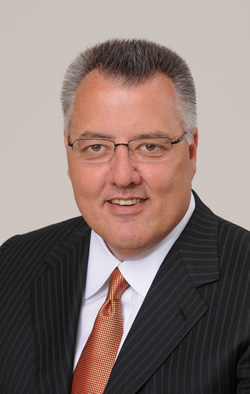


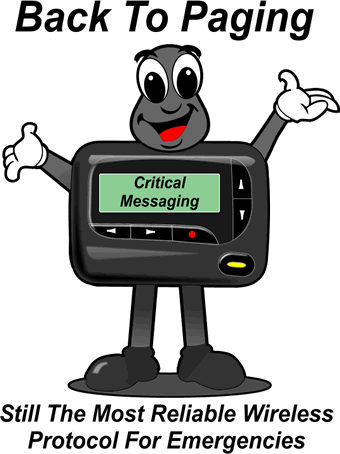









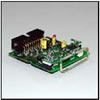
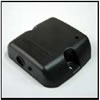


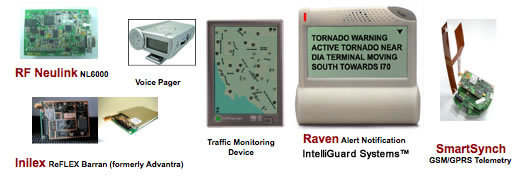


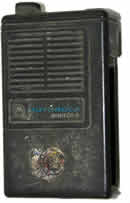
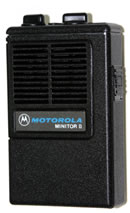

 SEASON’S GREETINGS
SEASON’S GREETINGS




















